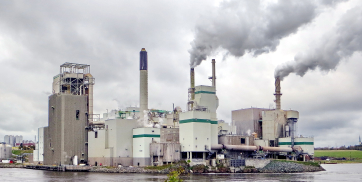This month’s Research Digest in the Highwood Bulletin features new research on methane emissions from the Permian Basin, a new open-source tool for estimating methane emissions at fine temporal scales, research on the use of flare gas for power generation, a new explanation for annual methane variability, and newly published controlled release testing.
1/10th of Produced Gas Lost to Atmosphere in the New Mexico Permian Basin
Hyperspectral aerial surveys of 36,000 km2 in the New Mexican Permian basin estimate a total leak rate of 194 metric tonnes per hour. The researchers found 50% of total emissions come from a small set of sites emitting more than 308 kg/hr. The authors suggest that ground-based surveys underestimate total emissions due to omission of uncommon high magnitude leaks here.
A New Tool for Exploring Variability of Methane Emissions at Fine Spatial and Temporal Scales
A new model has been developed for understanding the impact of temporal variability in methane emission rates at production sites and is tested in multiple scenarios. The skew and number of modes observed in emissions distributions depend on the time scale analyzed. Read more about the new Methane Emission Estimate Tool (MEET) here.
Power Generation Economically Feasible for Broad Range of Flare Gases
Economic analysis is carried out on flare gas recovery & utilization choices for various flare gas samples. Aiming to provide a guideline for economically optimal flare gas utilization, the authors note that although internal combustion power generation is economically feasible for nearly any flare gas composition, it has nearly no effect on CO2 emissions. The study concludes that recovery and utilization technologies other than power generation can reduce CO2 emissions by 40-90% here.
Yearly Variations in Methane Emissions Growth can be Accounted for by Tropical Weather
Sea surface temperature variations in tropical oceans are found to be good predictors of continental methane flux in tropical regions of South America and Africa. Utilizing satellite data from 2010-2019, the analysis benefits from a strong signal associated with the 2014-16 El Niño. The researchers put forward this newly understood climate feedback mechanism here.
Sensor Resolution of 1 ppm Leads to Reliable Leak Detection
Methane sensors are simulated in the Permian Basin, with leak rates of 1-10kg/hr. The authors examine trade offs between number of sensors and sensor sensitivity. A single sensor on site is found to be capable of detecting 1 ppm enhancement to background concentration for any leak exceeding 10 kg/hr. The authors recommend a fixed monitoring network with approximately 1 sensor per site to detect leaks of 5-10 kg/hr here.
Methane Inversion Approaches Compared for Stationary and Mobile Sensors
Localization and quantification algorithms are tested against 26 controlled release tests at TotalEnergies Anomaly Detection Initiatives in France. Previously built inversion models are found to be robust for both mobile and fixed-point sensors, both with unique advantages. Read more here.




